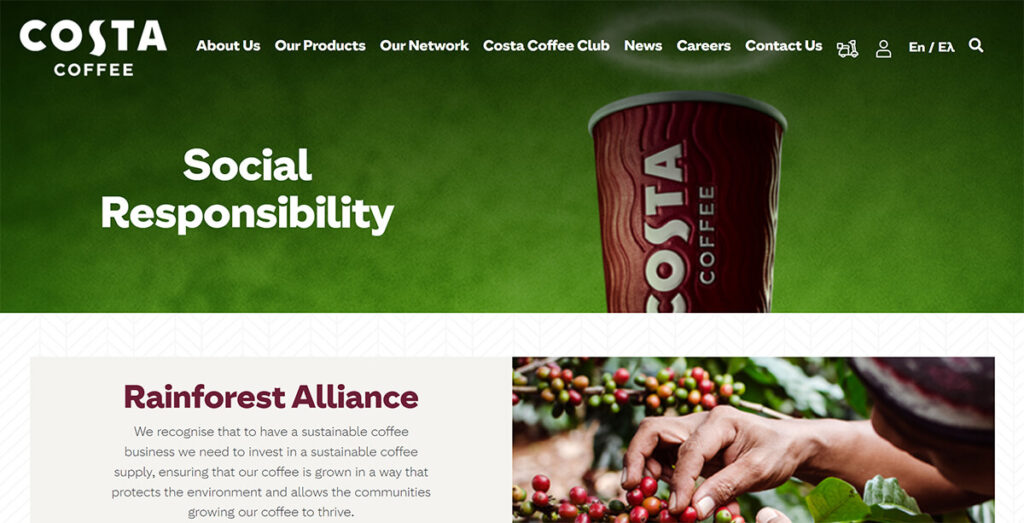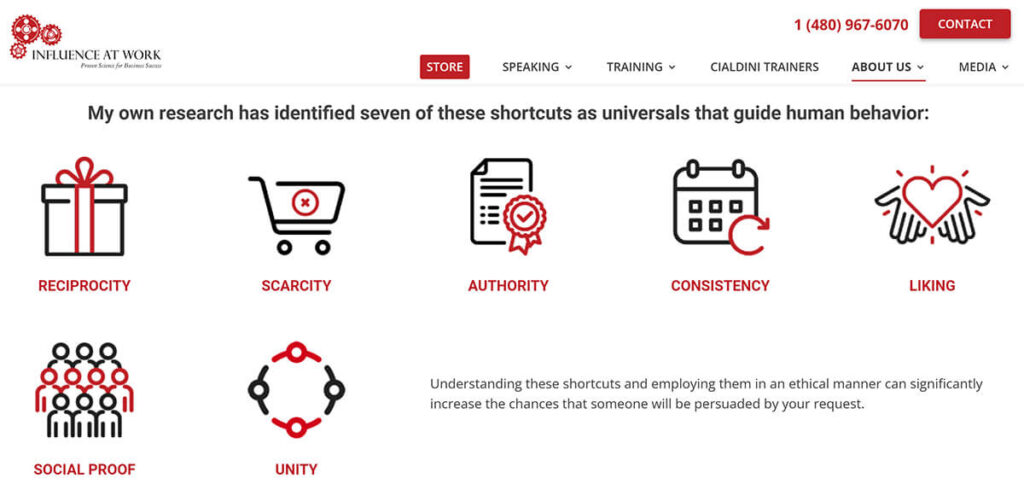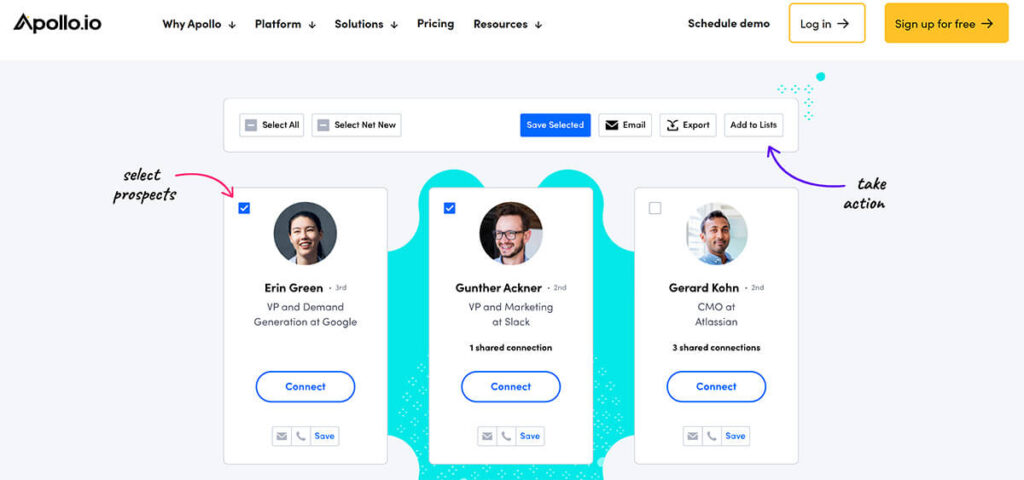Is your sales performance lackluster? Are you worried that you don’t know the right sales techniques to close deals? We get it.
If you are part of a sales team, you may have to meet a sales quota or you stand to lose a part of your income. And if you are running a business, you need sales to drive profits or your venture won’t last long.
Heck, you need to master effective sales techniques no matter what role you’re in. Sales skills help you motivate team members, negotiate with clients, earn approval, and much more.
Fortunately, we have put together the ultimate list of sales techniques used by top-performing salespeople. These tactics are ethical, effective, and backed by psychology and behavioral science. Read on for 18 best practices that are guaranteed to improve your sales pitch, your communication skills, and your ability to close deals.
18 Effective Sales Techniques: Become The Rockstar Of Your Sales Team
If 18 sales techniques sound overwhelming, remember: You don’t need to master them all. Instead, read through this list one by one and think back to situations where you could have applied each tactic. And always feel free to modify the concept to match your offer, the prospect’s objections, and your own skill set. Let’s go!
1) Find Your Buyers’ Problems
You can’t jump right into selling your products or services to your prospects. The first important sales technique to master is helping your audience see that they have a problem or a concern.
Then, you can amplify how bad that issue is by talking about the pain it creates. This primes your prospect to pay attention to your proposed solution. At this point, you can present your audience with the product, service, or method that you have to offer.
Do this by asking questions about their current situation and getting them to think about the consequences of not solving their problem.
For example, you could talk to a procurement manager about how the department’s biggest problem is saving money on supplies. Reinforce the issue by quantifying how inefficient processes can waste precious labor and cost them even more money. Finally, propose your SaaS product that automates the process to streamline spending and save time.
2) Create Urgency
It is often not enough to make your audience aware that there is a problem. You must also create the urgency necessary for them to take action.
Studies show that even minor tasks can become important if they are urgent. This is because of the potential for an immediate result, like the satisfaction and ease that comes when a task is done and the pressure is lifted.
To leverage urgency, highlight the negative aspects of a prospect’s current situation. Talk about how much time and money it will cost them to not make a change and how quickly it will get worse if they don’t take action.
Also, set deadlines when you run discounts and special offers to encourage your prospects to act. The idea is to encourage people to act now and avoid postponing a decision indefinitely. Many ecommerce businesses apply this practice by running flash sales every one to two months. Or, they offer an early bird discount for people who buy a product before its official drop.
However you can implement it, urgency is a powerful sales technique for converting prospects into customers.
3) Be Aware of the Buying Process
People rarely buy things spontaneously. Especially for high-ticket items, they go through a buying process before putting real money on the table. This includes researching, comparing options, and weighing the pros and cons before finally purchasing.
It’s important to be in tune with this reality and try to guide your prospects through the sales funnel. The main stages of a buying process include:
- Awareness: When people first realize that they have a problem or an opportunity.
- Information-gathering: The prospect starts researching and gathering information about the issue.
- Evaluation: The prospect considers different options to determine the best solution.
- Purchase: The buyer decides to purchase the product or service.
- Review: After testing the product or service, the customer reviews it and shared their opinion with others.
Each stage is critical in how you craft your message and overcome objections. For example, a person who wants to know how to save money on their taxes might be in the awareness or information-gathering stage. They recognize that they have an opportunity to save money, and may reach out to investment professionals for advice.
On the other hand, if that prospect asks about an investment manager’s fee schedule, they are more likely to be in the purchase stage. At this deeper step in the sales funnel, the potential client is more ready to make a commitment. And this indicates to sales reps that they should be ready for a different set of questions and also press harder for a commitment.
4) Overcome the Status Quo Bias
Once your prospect notices their problem, they may still hesitate to buy from you because no one likes change. This is known as the status quo bias and it’s important to know how to work around it when selling.
One study based on biological science found that when people have to make hard decisions, they tend to stick to what is normal. This is because they want to avoid the discomfort that comes with making a big change and the potential of making an uncommon mistake.
To help a prospect overcome the status quo bias, think of ways to make them feel more comfortable and confident in their decision. Focus on the benefits of your solution and how the prospect will feel after changing their current situation.
In addition, emphasize that the process of switching is easy, stress-free, and potentially reversible. Use your understanding of their problems and create urgency to get them over the line. But don’t go into hardcore sales mode. Instead, emphasize the value that your product or service provides and how it’s going to improve their life.
5) Demonstrate Your Expertise
Your prospects won’t just take your word when you talk about your products and services. You need to prove your value and back up your claims about how you can help them.
To do this, share case studies, customer testimonials, or any other proof that you are knowledgeable in the industry. And to verify your competence, use figures like:
- What percentage improvement do your clients see on average?
- How quickly do your clients achieve their goals?
- How much money do your clients save or earn by using your services?
All of these numbers paint a powerful picture and demonstrate that you’re the right person to work with on their problem.
6) Leverage the Fear of Missing Out
Salespeople have long known that the fear of missing out, or FOMO, is a powerful sales technique. And now there is research to back it up.
Studies have shown that FOMO can induce people to take action, even when they are on the fence. And this is especially true during the buying process when prospects are evaluating their options.
So how can businesses use FOMO to their advantage?
Frame your product or service as a unique opportunity that won’t last forever. Emphasize the limited availability of what you’re offering and create a sense of urgency. You can also leverage social proof by showing the results other people have obtained with your offerings or demonstrating how many people are using your products. Or, you can create time-bound offers like flash sales, seasonal discounts, and more.
Whatever you do, make sure you communicate a clear message: act now, or risk missing out.
7) Use the Power of Storytelling

It’s a myth that humans make decisions rationally. Good salespeople know that it’s vital to engage a person’s emotional side when selling to them. And this is where storytelling can help.
Stories have the power to create an emotional connection with your audience. In fact, storytelling is a key tenet of branding for this reason. People are far more likely to try your product if it has an emotional appeal.
Plus, stories can build trust. So proactively share a quick case study or anecdote from a previous client. Talk about the success they experienced with your product or service. It doesn’t have to be long; a few sentences can make all the difference in establishing trust and instilling confidence.
You can also create images, videos, and blog posts to tell your customers about the origins of the mission of your business. Doing this will allow you to you form a bond with your target audience. And if people associate your brand with a positive story, it will make the sales process much more efficient and effective.
8) Practice the Seven Principles of Persuasion
Every salesperson should read the book “Influence: The Psychology of Persuasion” by Dr. Robert Cialdini. Dr. Cialdini is the foremost expert on how to persuade people and motivate action. The book isn’t about unethical tactics, but rather about breaking down barriers and unconscious defenses.
There are seven key scientific ways that you can influence your customers and clients. And if executed properly, you will find that prospects trust you more, are more willing to buy from you, and are more open to your sales pitches.
- Reciprocity: Humans are hardwired to return a favor. So start by offering something to your customer before asking for their email address, a pitch meeting, or something else. For example, give them a free ebook, a cup of coffee, or even just a smile to win them over.
- Scarcity: People are more likely to act if the opportunity is limited. Think of it like a sale with limited inventory. If people know there are only a certain number of spots available, they feel pressured to take action.
- Authority: Customers want to buy from an expert or someone who has a track record of success. So always showcase your credentials, certifications, and awards. This will help customers feel more comfortable working with you.
- Consistency: Use the status quo bias to your advantage. After a prospect has committed to something (like signing up for an email list) they are more likely to stay consistent with that commitment. So gradually increase the stakes until they are ready to make a purchase. Each micro-commitment will make them more open to subsequent steps because they are consistent with previous actions.
- Liking: If a customer likes you, they are more likely to buy from you. Show your customers that you care about them and focus on building meaningful relationships before pushing a sale. Share engaging stories or jokes to create a connection and tailor your approach to their unique needs.
- Social proof: Create confidence by showing potential customers that others are happy with your product. Use customer reviews, testimonials, and case studies to show the positive results of working with you. Doing this will help establish trust and reduce the perceived risk.
- Unity: This principle refers to building a shared identity with your audience. Make your potential client feel like there is a ‘we’ rather than a ‘you and I’. If you can make a person feel like you belong to the same group, they will relate to you. So, talk about mutual sports that you enjoy, a social group you both belong to, or the fact that you are from the same town to build a sense of unity.

These techniques have been scientifically proven to drive sales success. By mastering the art of influence and persuasion, you can become a more effective salesperson and negotiator.
9) Use Social Proof
Social proof is a sales technique that relies on the endorsement of others to sell a product or service. The idea is that if other people like a product, it must be worthwhile. And seeing this external validation improves the likelihood of new prospects giving the business a chance.
You can apply social proof in many ways to boost sales. One common approach is to feature customer testimonials on your website or in advertising materials. This allows potential customers to see that real people have used and enjoyed your product or service.
Alternatively, you can also show off awards or certifications that your business has received to build trust and credibility with potential customers. Finally, you can highlight the popularity of your product or service by showing how many people have already purchased it.
All of these forms of social proof can help you drive sales and increase conversions.
10) Leverage Non-Verbal Communication
If you are in sales, then you know that strong presentations are critical to winning people over. But presentations are about more than verbal skills. In fact, nonverbal cues can be even more important. They can convey confidence, show your commitment to the deal, and signal that you are ready to help the customer.
So when you are in a sales meeting, always be aware of your body language. Here are four powerful ways to use nonverbal communication:
- Speak with confidence. This means making eye contact, speaking clearly and at a moderate pace, and using gestures sparingly. Confident communication will demonstrate that you believe in what you are selling. Also, carefully manage your tone. Speak in a friendly, upbeat way because your mood and tone can show your level of interest.
- Convey your beliefs. It’s important to share your passion for the business. You can do this by talking about your own experience with the brand and explaining why you enjoy helping your customers. Or, share the core values of your business and why these may resonate with the potential client. If you can convince the prospect that you truly believe in the business, and are not just out to make a sale, it will be much easier for your audience to trust you.
- Work on your body language. Subtle changes in your body language can send dramatic signals to your prospects. When you look at people directly, smile, and angle your body in their direction, you show that you are engaged. Conversely, don’t fold your arms, look away, or appear too relaxed. These actions can communicate a lack of interest.
- Mirroring. This can be a subconscious aspect of body language or a deliberate technique. Mirroring is when you match the posture, gestures, and facial expressions of another person. It’s an effective way to create a subconscious sense of rapport and connection. But be careful not to overdo it though, as this can appear unnatural or rude.
These tips will help you master the art of nonverbal communication. By being more aware of your physical body and the space around you, you will be more adept at establishing meaningful connections with your contacts.
11) Practice Active Listening
The sales process is all about building relationships. And one of the most important elements of relationship building is active listening. Active listening is a sales technique that involves carefully listening to what your prospect is saying and then responding in a way that demonstrates that you understand their position.
It’s an incredibly powerful sales tool because it not only allows you to build rapport with your prospect but also gives you valuable insights into their needs and how you can best meet them.
Here are a few things you can do to practice active listening:
- Make sure that when your prospect is speaking, you are giving them your full attention. This means removing any distractions and making eye contact.
- Summarize what your prospect has said to show that you understand them.
- Allow your customer to speak as long as they need to. Avoid jumping in to pitch something or turning the conversation in another direction.
- Acknowledge that you heard your client fully and validate their experience, desires, and concerns.
Do these steps seem obvious to you? They might. But you would be surprised at how few people take the time to listen to others — especially in a high-pressure sales environment.
Just remember, active listening is not the same as normal listening. It involves reserving your judgment and listening for the sake of listening, not to respond. And it is about giving someone else the attention they deserve. Salespeople who listen attentively will be better equipped to provide a quality customer experience, build relationships, and close sales.
12) Leverage Referrals
In the modern age of email marketing and online advertising, good old-fashioned word of mouth is still as powerful as ever. So if you want to sell more, then learn to leverage your existing customer base. To do this, start by asking your happiest customers for referrals.
Whenever someone has had a positive experience with you or your brand, ask them if they know anyone else who could benefit from it. To convince them to provide an email address or phone number, provide incentives for referrals such as discounts, gifts, or money. This can encourage people to proactively spread the word about your business.
Finally, keep track of all the referrals you get and use them to your advantage. By analyzing the customer data, you can identify patterns that will help you target more people who are likely to provide referrals. This tactic can help you develop a strategic marketing plan and drastically increase average customer value.
13) Get Small Commitments
The most successful salespeople understand the importance of small commitments. Small commitments are simple requests that you make of your prospects that are easy to agree to. The idea is to get them to commit in a small way before making a larger commitment.
By establishing a series of “yesses”, you psychologically prime your prospect to be more receptive to larger requests, such as making a purchase.
Here are some examples of small commitments that you could ask your prospects to make:
- Signing up for a free trial of your product or service
- Attending an informational webinar
- Filling out a survey
- Providing basic contact information
- Committing to a follow-up meeting
These small commitments can be incredibly powerful in the sales process. The initial step is like getting your foot in the door. It is less intimidating and less demanding for the prospect and typically opens them up to the next level of engagement.
So next time you are in the sales process, remember to get small commitments early on. Before asking a CEO to get on a sales call, prompt them to read a blog post or download an ebook. This will help build a stronger rapport and increase your chances of closing the sale.
14) Follow Up
The biggest mistake you can make in sales is not following up. It’s important to remember that people are busy and they may not always respond right away to your emails or calls. So failing to follow up with your leads and prospects means leaving sales on the table.
Be persistent and keep reaching out periodically until you get a response. You can set reminders or use a CRM to help stay on track with follow-ups. But make sure that every message is personalized — generic templates are more likely to be ignored or flagged as spam.
Following up also gives you a chance to answer any questions they may have, clear up misunderstandings, and address any objections. So take each follow-up as an opportunity to provide relevant, valuable information.
15) Go for No
Any experienced salesperson will tell you that the key to success is persistence. You can’t expect to close every deal, and you will definitely hear a lot more “no’s” than “yeses”.
However, each “no” brings you one step closer to a yes. And “Go for No!” by Richard Fenton and Andrea Waltz offers an effective system for turning rejection into motivation. The book lays out a clear process for handling objections and moving on to the next step. More importantly, it emphasizes the importance of keeping a positive attitude and staying focused on your goal.
While this may seem simple, actively embracing rejection is one of the most effective sales techniques there is. Eventually, all selling becomes a numbers game. One where you focus on the sales process instead of the outcomes. You may be surprised by how much more successful you become when you learn to lean into the word “no”.
16) Practice Dealing with Objections
Part of any effective salesperson’s toolkit is dealing with objections. You can do this by studying your ideal customer’s pain points ahead of time and coming up with a solution for each of them.
This ensures that you are prepared to answer any objections they might have and helps you demonstrate your product’s value.
You should also practice how to handle objections in a calm, confident manner. If you have a mentor or a partner to help, you can role-play different scenarios to give you exposure to handling various sales objections.
With each response, be sure to show your prospect that you understand their needs and have solutions to address them. And remember, it’s okay for the customer to disagree with you. Just stay focused on finding a solution that provides them with value.
17) Use a Customer Relationship Management Tool
Sales teams typically use CRM tools to keep track of their leads and prospects. This can help with personalizing communications and managing previous interactions. CRMs also measure progress toward sales goals, which can help you stay motivated and measure the effectiveness of different sales techniques.

CRMs are great for managing your buyers and leads, and connecting other functions in your company. Your customer support will benefit from having access to all customer information in one place, and your marketing team can use it for segmentation and targeting customers. And if you are part of a tech company, the developers and product team can use the data to identify areas of improvement in user experience.
By leveraging a CRM and lead generation tool, you can streamline various functions of your business and increase the chances of sales success.
18. Give Customers Positive Labels
There’s an interesting psychological phenomenon where people try to stay consistent with the image they create. And sometimes, this image develops subconsciously.
For example, imagine that you take a stab at painting something. And then a friend or family member tells you that you are an incredible artist. At first, this may surprise you, but over time you will slowly start embracing the label. The next time an opportunity to paint comes up, you might volunteer yourself. The label that was once placed upon you becomes a part of your identity.
This same concept can be applied as a sales technique. For example, you could say “Business owners like you did their own research and realized that product X could lower their costs by 10%.”
Here, the label of the research-oriented business owner was applied very lightly and effectively.
It was also used to create consensus bias — that is, believing that you are making the right choice because everyone around you agrees that it is correct.
Final Thoughts on Sales Techniques
Sales can be a rewarding task no matter what role you’re in. So if you want to maximize your influence and become a better salesperson, test out these sales techniques on your next pitch.
From building relationships and positioning yourself as a leader to understanding your customer’s needs and closing deals faster, these 18 best practices will help you master the sales process in no time. Good luck and good selling!



